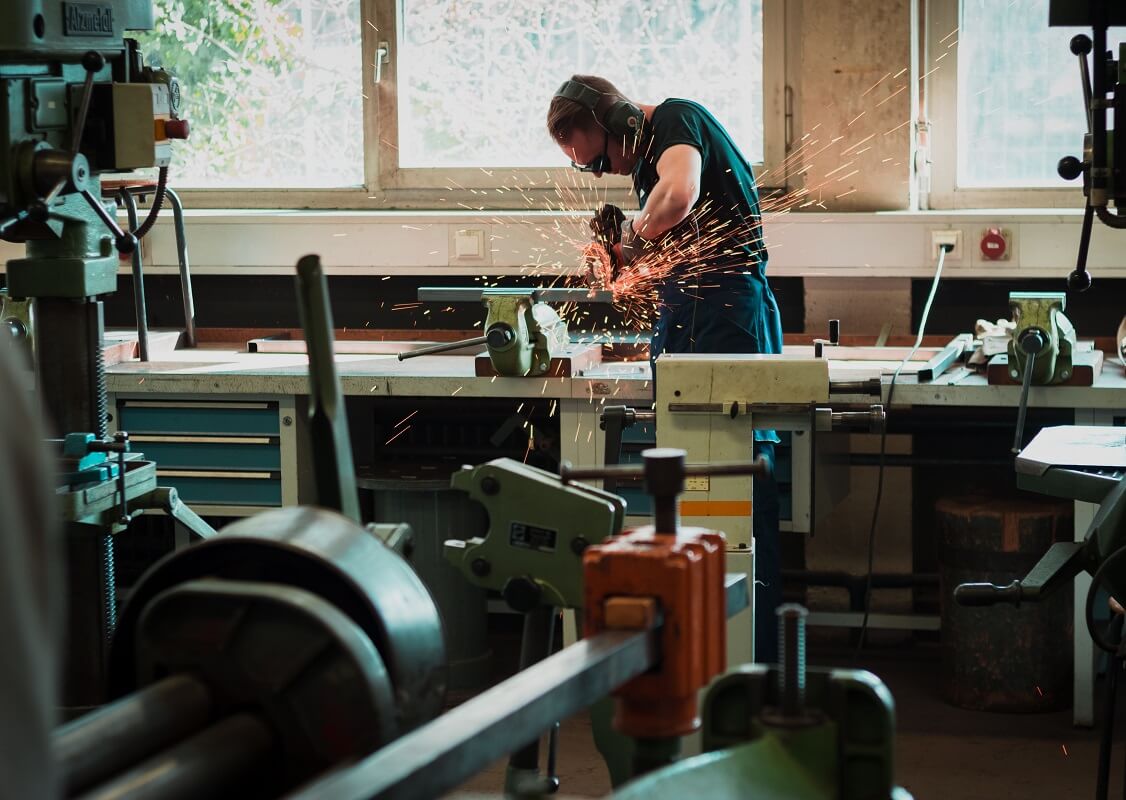
Understanding IAQ: Your Guide to Healthier Indoor Air
Indoor air quality (IAQ) refers to the air quality within and around buildings and structures, especially as it relates to the health and comfort of building occupants. Poor indoor air quality can be caused by various factors including, allergens, bacteria, and other airborne contaminants. Air filtration systems are used to improve indoor air quality by capturing and filtering these pollutants from the air.
Indoor air pollutants cover a range of contaminants that can impact air quality in enclosed spaces, if not effectively controlled. These include particulate matter (PM), which may be present as dust, pollen, pet dander, and/or smoke. Volatile Organic Compounds (VOCs), are volatized or released into the air mostly during manufacture or use of everyday products and materials, from the use of products and materials containing VOCs, potentially causing odors. Additionally, contaminants such as mold, bacteria, viruses, and allergens can thrive indoors. Mitigating these pollutants is fundamental in improving indoor air quality and promoting a healthier work environment.
Outdoor pollutants, including vehicle exhaust emissions and industrial discharges, can also infiltrate indoor workspaces, highlighting the importance of comprehensive air filtration solutions in commercial and industrial facilities. Managing the sources of indoor air pollution is crucial for safeguarding the health, well-being, and comfort of staff and patrons.
Sources of Indoor Air Pollution in Commercial and Industrial Settings
In commercial and industrial settings, sources of indoor air contaminants range and require specific attention to maintain safe working environments. Applications, such as, woodworking, welding and machining processes, commercial kitchen usage, climbing gyms, and cigar bars, generate airborne contamaninants, necessitating air filtration systems.
Poor IAQ can lead to various health issues — in industrial settings, processes such as welding and machining generate hazardous fumes and particles, presenting a significant indoor air quality challenge. Welding fumes, release toxic metals like manganese and hexavalent chromium, which, when inhaled, can lead to severe respiratory problems, including metal fume fever and lung diseases. The fine particulate matter produced during machining processes poses a risk of both immediate respiratory and long-term health issues.
Small woodworking shops and larger-sized facilities are known for producing copious amounts of airborne dust, rich in allergens and potentially carcinogenic compounds. Prolonged exposure to woodworking dust can result in chronic respiratory conditions like asthma, chronic bronchitis, and in more severe cases, lung cancer.
Bars and entertainment venues often face the challenge of mitigating the effects of cigar and cigarette smoke. Secondhand smoke is a well-established indoor air pollutant, containing thousands of chemicals, many of which are carcinogenic. Prolonged exposure to secondhand smoke in such establishments can increase the risk of respiratory ailments and cardiovascular diseases among employees and patrons. A smokey and hazy environment can also impact the customer experience and make it hard to establish a solid customer base and positive reputation.
Grease particles and VOCs produced while cooking in commercial kitchens can easily accumulate in the air, presenting foul odors and irritants. These can affect the respiratory health of kitchen staff, potentially leading to allergies and respiratory conditions over time. Kitchens in commercial office buildings can spread odors into working spaces, creating an uncomfortable and distracting environment for staff.
In work environments like these, where exposure to harmful pollutants occurs regularly, the consequences may result in immediate respiratory issues and long-term chronic ailments. The importance of air filtration in these settings should not be overlooked and is crucial in protecting staff.
Air filtration systems capture and filter air contaminants through the use of fans and specialized filter media. Fans and filters are available in various types and configurations to meet CFM requirements and target specific types of pollutants.
Determining what air filtration system is right for your application is crucial. There are several factors to be considered, such as the type of air contaminants present, the size of the space, the desired level of air quality, and the budget.
General Air Quality Improvement
Blue Ox air filtration systems for general use include a 1" pleated pre-filter, followed by a pocket bag filter (either 65 or 95%). These air cleaners are highly effective at capturing and filtering dust and smoke in applications where odors are not an issue. By consistently cleaning and cycling the air within a room, these systems help maintain a healthier living or working environment.
HEPA Air Filtration
Our HEPA air filtration systems include a 1" or 4" pleated pre-filter, followed by a 95% pocket bag filter, and a 99.97% HEPA afterfilter to capture particles as small as .3 microns with a high degree of efficiency. These air cleaners are excellent for applications that require the ultimate in clean environments, such as hospitals, sterile manufacturing, labs, and more.
Odor Control
We offer air filtration systems for both light and heavy odor control.
• Lite Odor Control (CF) air cleaners are equipped with a 1" or 4" pleated pre-filter, followed by a pocket bag filter (either 65 or 95%), and a 2" Charcoal afterfilter (9lbs of charcoal).
• Air filtration systems for extra odor control (CC), include a 1" or 4" pleated pre-filter, followed by a 95% pocket bag filter, and an 18lb or 36lb Carbon Module.
See our Carbon Absorption Qualities Chart for the effectiveness of charcoal in your application.
To maximize the effectiveness of air filtration, Blue Ox air cleaning systems are placed strategically to create a circular airflow pattern. Each air filtration system has a specific "catch" and "throw" distance, which determines how far apart they can be placed to maintain continuous airflow from one unit to the next.
The frequency at which air completes this circulation pattern is called an air exchange. The higher number of air exchanges provided by an air cleaner directly correlates with the system's effectiveness at filtering indoor air.
The amount of air exchanges required per hour will vary based on your application. Meeting the required number of air exchanges ensures that a high level of air quality is achieved.
Many regions have established regulations and standards governing indoor air quality. Staying compliant with these regulations is not only important for the health and safety of staff but can also prevent fire hazards, help improve production rates, and lower energy and maintenance costs. To learn more about indoor air quality and how it applies to you, get in touch with our specialists.
You may also like:
• Air Filtration vs. Ventilation
• Everything to Know About HEPA Air Filtration
• 5 Reasons You Need Air Filtration

Copyright © 2025 | Blue Ox Air Cleaners. A division of Air Cleaning Specialists, Inc.
